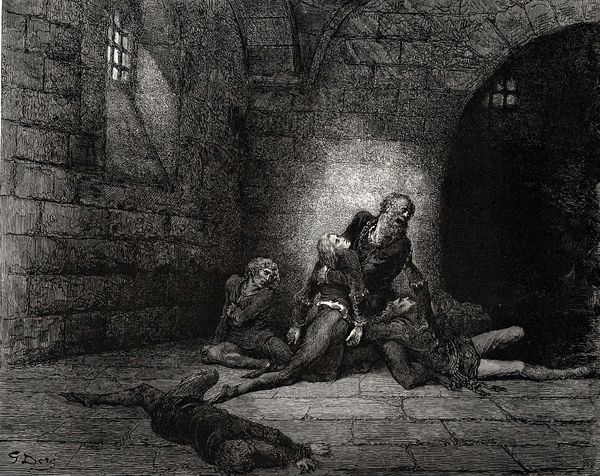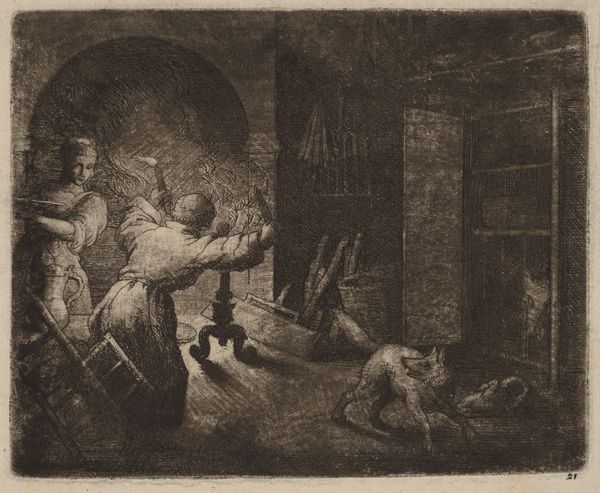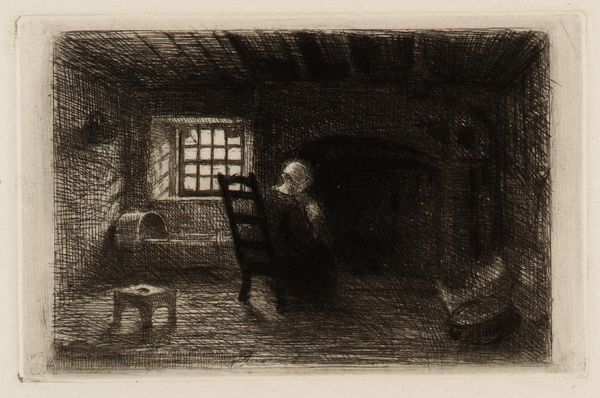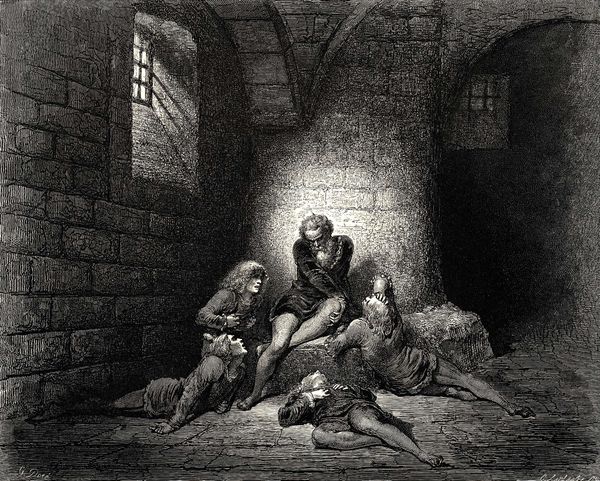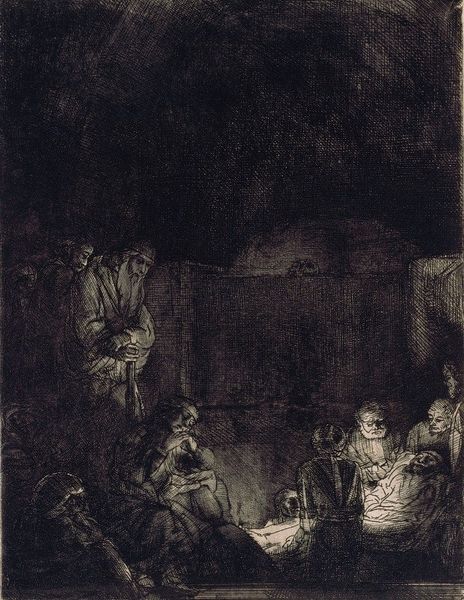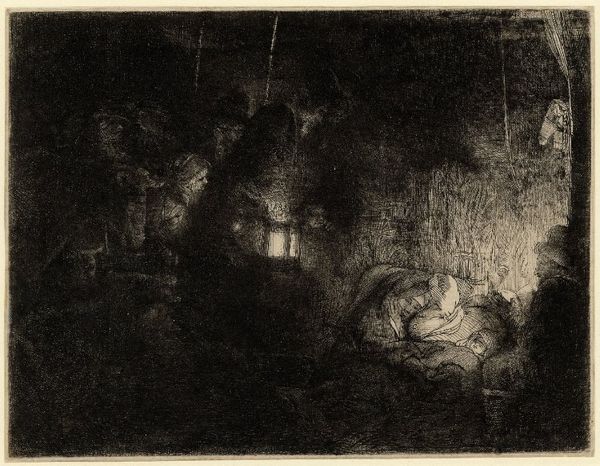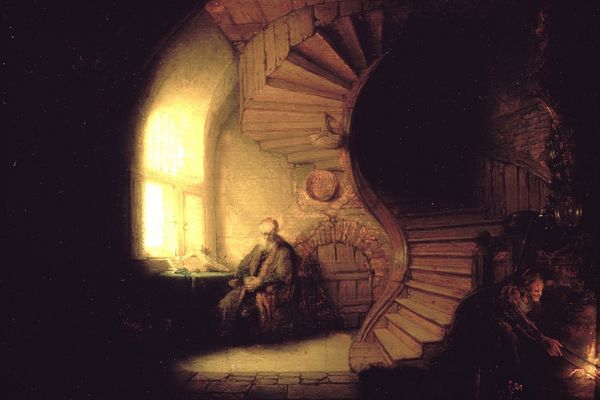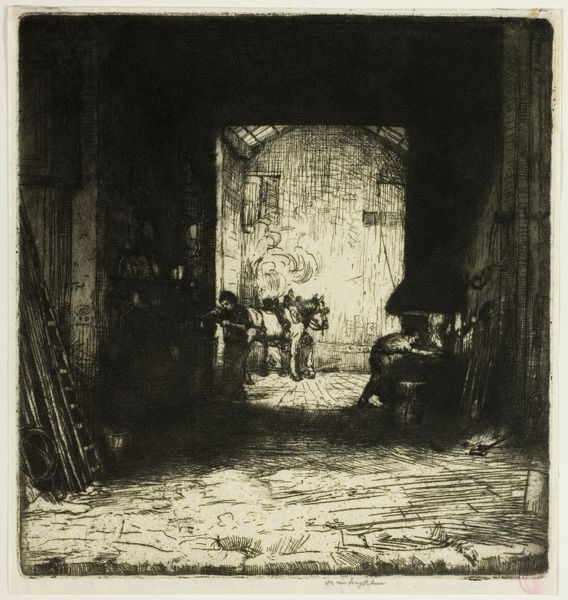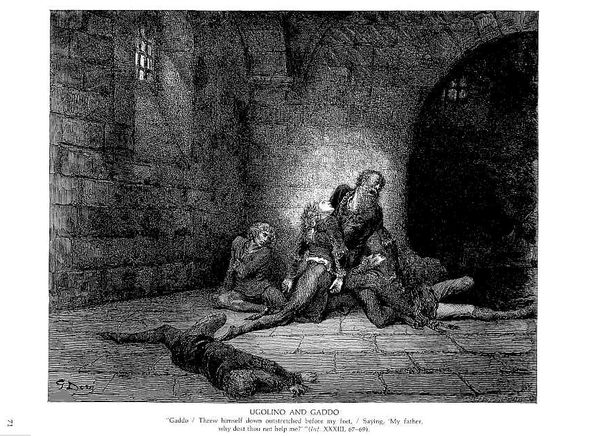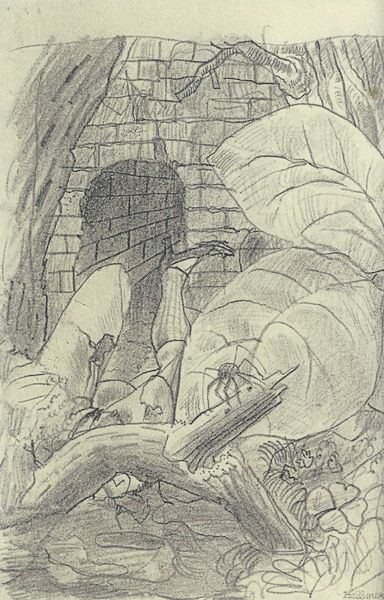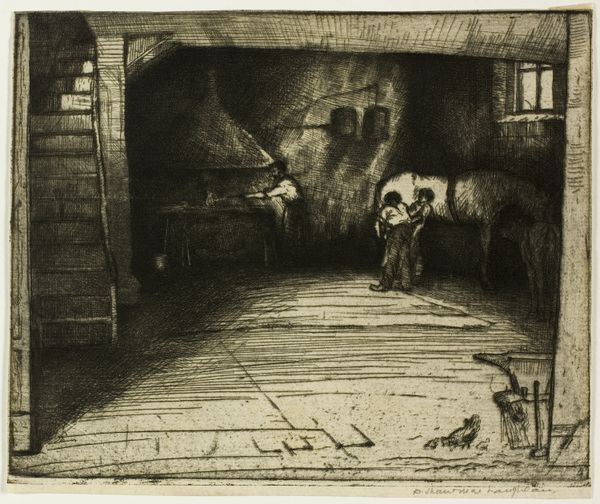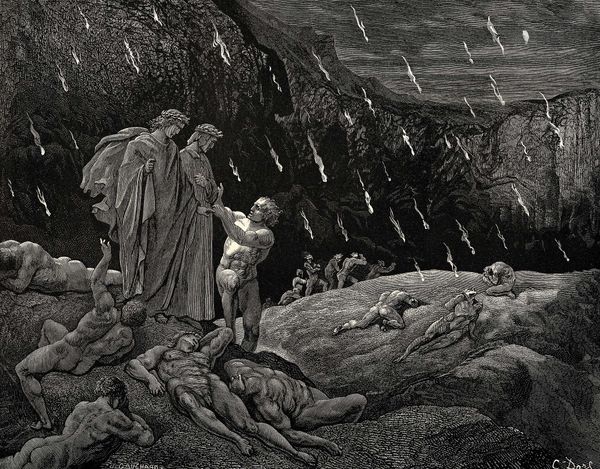
drawing, print, etching
#
drawing
#
dark place
#
medieval
#
narrative-art
# print
#
etching
#
sculpture
#
landscape
#
figuration
#
romanticism
#
haunting style
#
dark mood
#
haunting
#
history-painting
#
ruin
Copyright: Public domain
Curator: Gustave Doré’s “The Inferno, Canto 33,” executed as an etching, plunges us into a scene of despair. It has an almost suffocating atmosphere, doesn't it? What stands out to you? Editor: The stark contrast between light and shadow is quite striking! And there are several bodies on the floor; the scene seems to be happening inside of a medieval dungeon. How would you interpret this? Curator: From a materialist perspective, I look at the means of production here. The very process of etching, carving away at a metal plate, mirrors the agonizing process Doré is illustrating from Dante's narrative. This wasn't mass-produced like a woodcut might have been, which invites us to consider the value attached to this handcrafted method. Editor: That's fascinating. It makes me consider the labor involved in creating the artwork, adding another layer of meaning. Did the social context have an impact on this medium? Curator: Absolutely. Etching in the 19th century was transitioning from a purely reproductive method to one valued for its expressive potential. The "dark mood," as an AI tag notes, wouldn’t have been as effectively communicated through other popular printmaking methods, since line and textures were more delicate and capable of achieving certain atmospheres, which the artist harnessed to create the perfect aesthetic conditions to sell his books to the wealthy class. How might consumption play a role here, given the themes in Dante's narrative? Editor: This makes me consider how images of hell became almost a form of entertainment, or a luxury commodity consumed by those who could afford to contemplate damnation from a distance. Curator: Precisely! The art challenges the relationship between high art and a broader, sometimes morbid, fascination of society with narratives around extreme suffering. It’s more than just religious or historical – it is deeply human. Editor: It's unsettling to consider that the consumption of such grim imagery could also be a form of social commentary itself. This changes my perspective quite a bit. Curator: Indeed. Examining the processes behind the piece deepens our understanding, and forces us to recognize that cultural elements or means of production always say as much about art as visual components or the artist’s psyche.
Comments
No comments
Be the first to comment and join the conversation on the ultimate creative platform.
